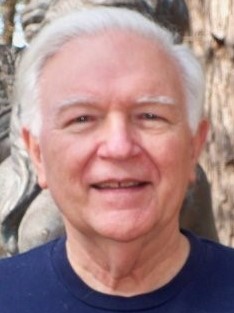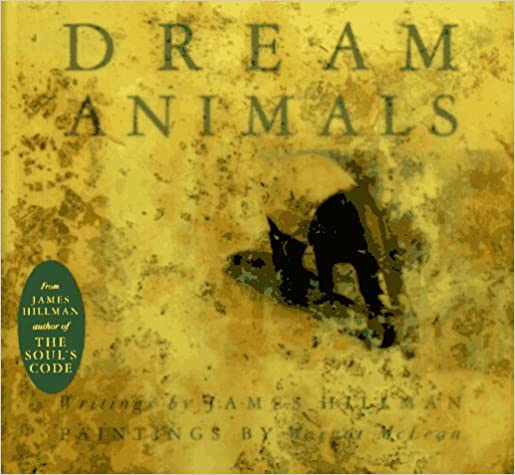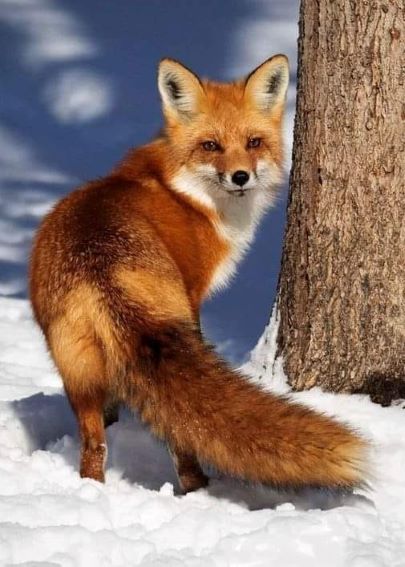The Grapevine Art & Soul Salon
Entertaining Ideas: Charles Knott

HILLMAN ON ANIMALS IN LIFE AND DREAMS

James Hillman has written a book entitled Dream Animals. The book begins by displaying a series of paintings by Margot McLean. The paintings feature animals in a unique way. The animal figures are sometimes obscured by forest settings and, when not obscured, a mood of tentativeness prevails, as though their existence is somehow in doubt. You can see them, but dimly and momentarily. They are obscured by the environment, but this is by their own design, their own desire not to be seen except lightly, momentarily. They reserve the right to vanish, as they often do in real life and when we attempt to recall them from our dreams. McLean is subtle enough in her art to capture these momentary realities. The paintings are accompanied by a conversation between her and Hillman. They are concerned that the animals are leaving the planet in a move towards extinction.
As an analytical psychologist, Hillman is concerned that, in analysis, animals are reduced to symbols and meanings; he wants the dream animal to live as itself. To paraphrase Archibald McLeish writing about the subject of poetry, Hillman wants the animal not to mean, but to be. The task he sets himself is to enter the animal psychologically without the distortion of interpretation. If we say, for example, "The fox in my dream is my own cunning, guile, and deceptivenes," then we have reduced the animal to a psychological abstraction, and we no longer have a fox. The fox evaporated into the interpretation. Hillman wants to keep the fox.
Those of us who notice our dreams are well aware that animals, like most dream images, are very difficult to retain in the mind once one awakens. This creates a particular poignancy when we reflect upon our knowledge that animal habitats are being destroyed, species are being lost forever, and that our experiences of animals in the natural world are largely being replaced by captured animals imprisoned in zoos and the virtual animals of electronic media. I am personally horrified by the fundamental precept that life lives by eating life. I would have us live some other way. Recalling the book of Genesis, I'm sickened by the passage that reads "and God gave man dominion over the animals." I don't want man to have dominion over the animals! I believe it may be this passage which justified our war against nature. On the one hand, Jesus was the "Lamb of God"; on the other hand, God the Father is constantly calling for animal sacrifices to "honor" Him. I don't get it.
But there is no point in describing here the long and nauseating history of even just America's sins against the animals. I will point out our good intentions in creating our national park system, a noble idea enabling Americans, when they can't hike or camp, at least to experience nature through the windshield of a car. We also have zoos and virtual animals on TV. My dog, whose favorite show is Animal Planet, can tell you how frustrating it is to try to jump into the screen and be with the animals on the virtual plains or in the jungles or the woods. But, I digress.
Let me digress even further. Speaking of windshields, yesterday I filled my tank at the gas pump, and I noticed the little squegee mop for the windshield. I almost never have use for it, but I am remembering now when I cleaned my windshield frequently, especially after driving at night. My windshield would be covered with bugs I had crushed just by driving down the road. Why is my windshield no longer covered with crushed bugs? Where have the bugs gone? Obviously, they have gone into extinction. I see the same paucity of insect and animal life on my own property.
I was privileged to inherit an ancient farmhouse situated in the middle of an eight-acre plot of land with a small pond. Birdlife is still plentiful, but frogs and crickets are scarce, and last summer I sat on my front porch and watched a single butterfly fly across the yard occasionally. One butterfly. Traveling through Mexico in 1966, I drove into and along with a migration of seemingly thousands of monarch butterflies. That was one of the most spectacular natural events of my life. Now I have one butterfly crossing my yard some days, not even every day. No poisons have been used on my property in the past thirty years, but I expect poisons get on the land anyway, carried by the wind and by rainwater running off the streets into my yard and pond.
I would say the animal Holocaust is real, so any animal, real or virtual, is precious. Hillman's values, as always in my experience, are correct: we should hold on to the real animals, and we should reify the dream animals as best we can. So, what is the correct approach to animals and analysis? Let Hillman explain:
You know, people come to therapy really for blessing. Not so much to fix what's broken as to get what's broken blessed. In many cultures animals do the blessings since they are the divinities. That's why parts of animals are used in medicines and healing rites. Blessing by the animal still goes on in our civilized lives, too. Let's say you have a quick and clever side to your personality. You sometimes lie, you tend to shoplift, fires excite you, you're hard to track and hard to trap; you have such a sharp nose that people are shy of doing business with you for fear of being outfoxed. Then you dream of a fox! Now that fox isn't merely an image of your "shadow problem," your propensity to stealth. That fox also gives an archetypal backing to your behavioral traits, lacing them more deeply in the nature of things. The fox comes into your dream as a kind of teacher, a doctor animal, who knows lots more than you do about these traits of yours. And that's a blessing. Instead of a symptom or character disorder, you now have a fox to live with, and you need to keep an eye on each other.(p. 2)
As for the future, no matter to what extent the animals disappear from the planet, I don't think we will be able to rid ourselves of the inside animal. The animal spirit will not be eclipsed by TV. And it may come into our dreams in unforeseeable ways. Animals as archetypal eternal images, as inhabitants of imagination, may die but not go away. All this fascination with dinosaurs and extinct or legendary species shows how animal images continued to breed in imagination so that what they do in the psyche is unforeseeable.(pp. 6-8)
Hillman then develops an image of the human psyche as an ark full of animals. As he describes the archetypal implications of the fox above, the rest of his book contains chapters on the psychic implications of the snake, the mouse, polar bears, horses, the rat, lions and tigers, the giraffe, the pig, the crab, and bugs.
I find this book to be endlessly imaginative and intellectually brilliant. I cannot recommend it to you highly enough.

Copyright, 2021. Barbara Knott. All Rights Reserved.